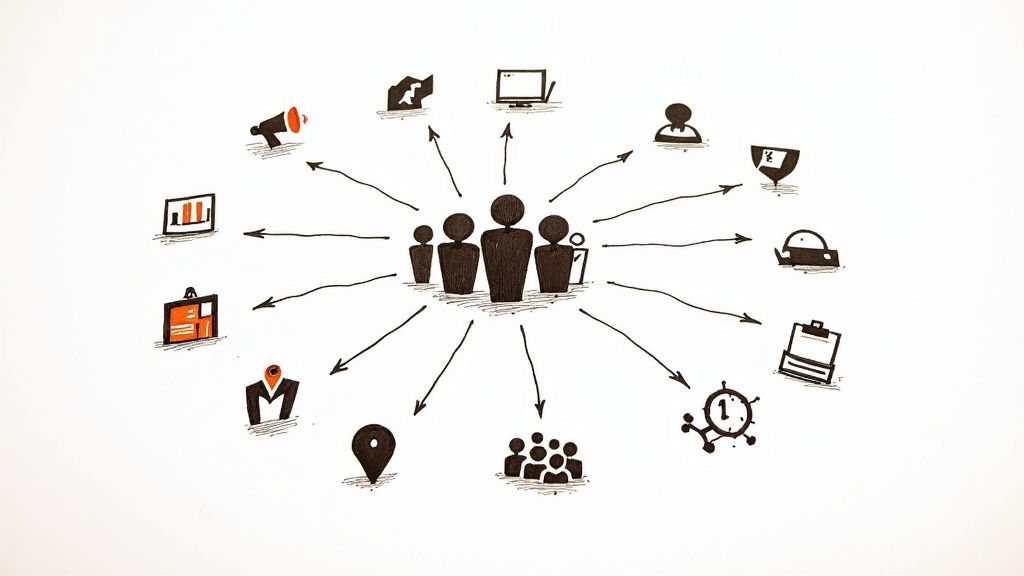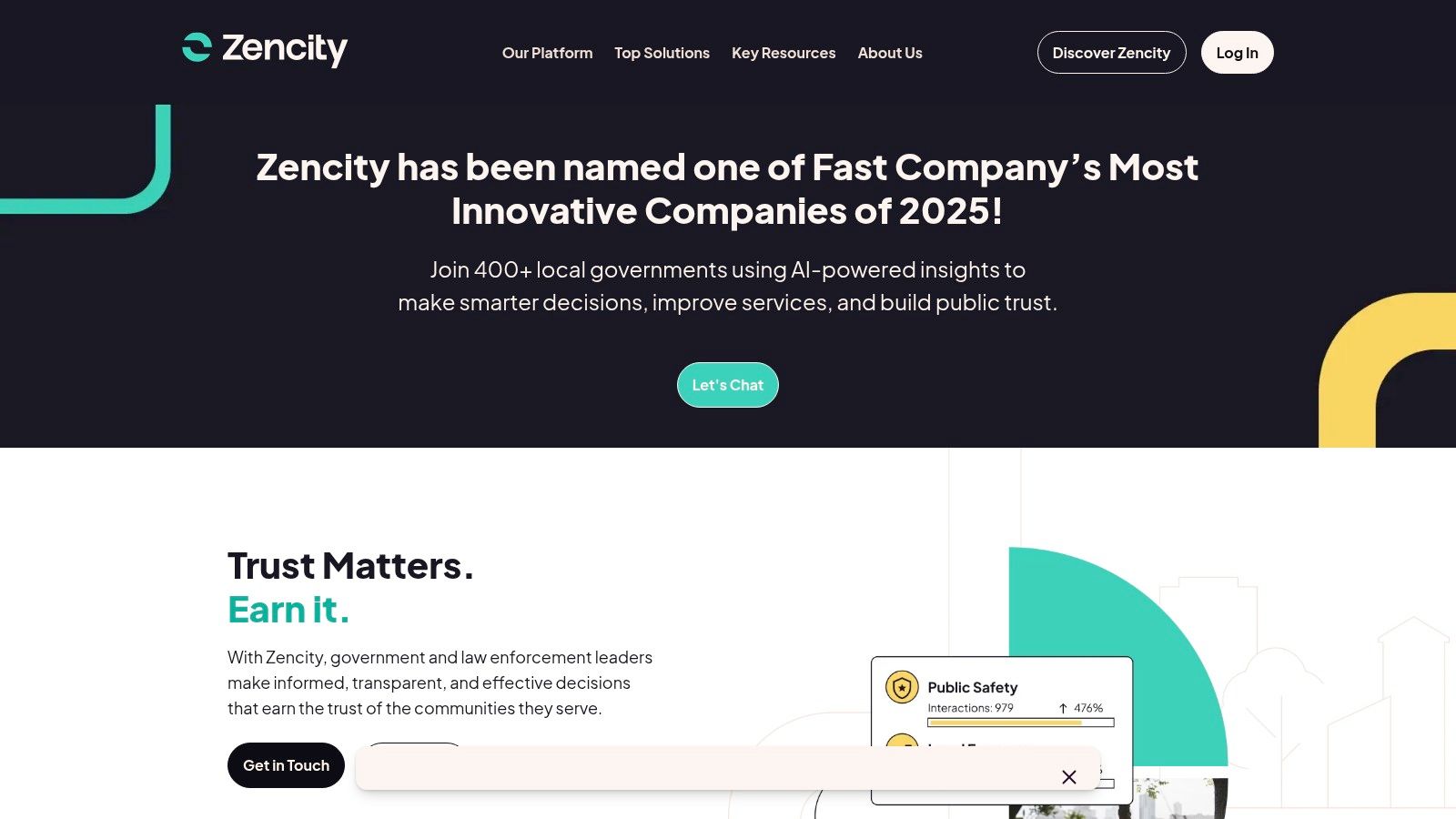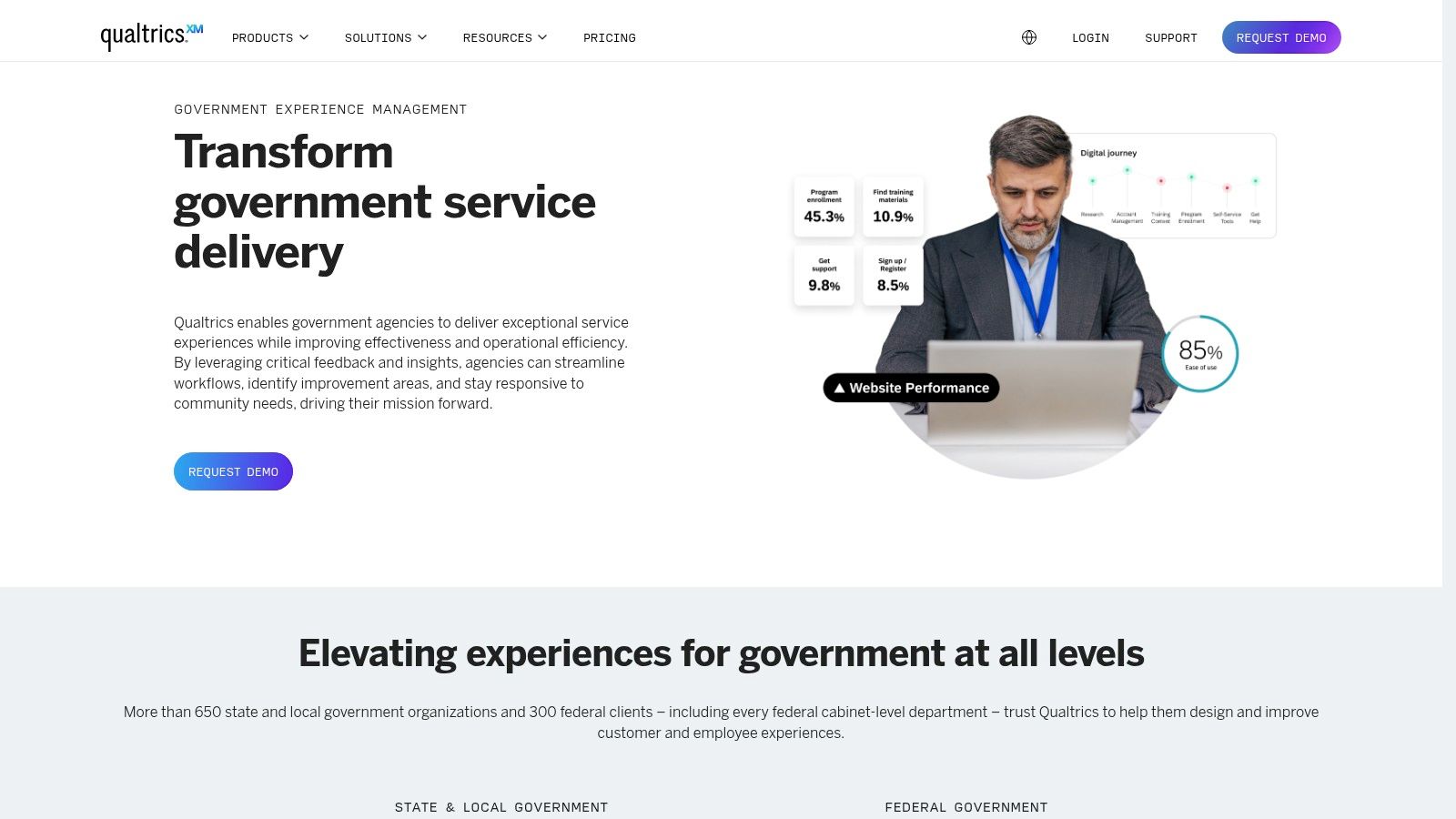November 14, 2025

Building a thriving community requires more than just a great idea; it demands the right digital infrastructure. The modern community manager's toolkit is often fragmented, forcing leaders to juggle separate systems for events, communication, membership, and feedback. This disconnect creates administrative headaches and a disjointed member experience, making it difficult to foster genuine connection and measure impact effectively. This guide cuts through the noise by providing a detailed breakdown of 12 top-tier tools for community engagement.
We go beyond generic feature lists to offer a practical analysis of each platform's ideal use case, strengths, and limitations. Inside, you'll find screenshots and direct links to help your evaluation. Whether you're a professional association looking to monetize content, a public agency gathering resident feedback, or a non-profit mobilizing volunteers, this list will help you find the perfect solution to centralize your operations and deepen engagement.
Of course, the best software is only as effective as the strategy behind it. To maximize the impact of your chosen platforms, consider these established 8 Community Engagement Best Practices to ensure your efforts are both intentional and sustainable. Now, let’s explore the platforms designed to bring your community together.
GroupOS stands out as a premier all-in-one platform for organizations seeking to consolidate their community engagement efforts. It replaces fragmented toolchains by unifying event management, membership subscriptions, content delivery, and communication into a single, white-labeled ecosystem. This makes it an exceptional choice for professional associations, enterprise teams, and event organizers who need a robust, branded hub.

The platform is purpose-built to not only manage but also monetize a community. It integrates sophisticated event ticketing with features like VIP add-ons and dynamic checkout forms, alongside a centralized content hub for courses and videos. This unified approach directly addresses common challenges, with reported results including a 30% reduction in administrative workload and a 15% increase in upsell revenue. For a deeper look into the platform's capabilities, you can explore their detailed guide on building a community app.
Best for: Organizations that need a powerful, branded, and scalable solution to manage and monetize events, memberships, and content in a single platform.
Pricing: Custom pricing is available upon request. GroupOS offers a free trial with custom setup to accelerate onboarding.
Learn more at GroupOS.com
Granicus EngagementHQ is a comprehensive digital platform purpose-built for government and public sector organizations. Formerly known as Bang the Table, this tool provides a secure, centralized hub for managing public participation projects from initiation to reporting. It excels at facilitating complex, multi-stage consultations required for policy development, urban planning, and infrastructure projects.

Unlike general-purpose survey or forum tools, EngagementHQ is a robust suite of tools for community engagement, offering everything from interactive maps and participatory budgeting simulators to moderated forums and Q&A boards. Its powerful analytics dashboard provides deep insights into participant sentiment and demographics, helping agencies make data-driven decisions while ensuring equitable representation. The platform's integrated CRM and email campaign features streamline outreach and keep stakeholders informed throughout the project lifecycle.
Pros:
Cons:
Website: https://granicus.com/solution/govdelivery/engagementhq/
CitizenLab is a community engagement platform designed for local governments and public agencies seeking to build transparent, two-way dialogues with residents. It provides a user-friendly digital space for citizens to participate in local decision-making through surveys, idea generation, participatory budgeting, and interactive workshops. The platform is built to make civic participation accessible and meaningful for everyone involved.

What sets CitizenLab apart is its powerful back-end analytics and commitment to transparency. Administrators gain access to dashboards with AI-powered text analysis (NLP) to quickly synthesize qualitative feedback from thousands of comments, identifying key themes and sentiment. For organizations prioritizing trust and technical control, CitizenLab offers an open-source core, a unique feature among tools for community engagement. Combining this technology with expert advisory services helps ensure every project aligns with a well-considered community engagement strategy.
Pros:
Cons:
Website: https://www.citizenlab.co/
PublicInput is an integrated community engagement platform designed specifically for the workflows of US public sector agencies. It combines survey creation, public meeting management, and a resident CRM into a unified system, streamlining how organizations gather and analyze feedback. The platform excels at facilitating hybrid engagement, offering tools for both in-person and virtual participation, including live-streamed meetings with real-time polling and Q&A.

Unlike siloed solutions, PublicInput centralizes all interactions into a single resident database. This allows agencies to build a comprehensive picture of community sentiment over time and across multiple projects. Its standout feature is the AI-powered comment analysis, which can quickly tag and summarize thousands of public comments, saving staff significant time. This focus on efficiency and integrated data makes it a powerful choice among tools for community engagement for agencies looking to scale their outreach efforts.
Pros:
Cons:
Website: https://publicinput.com/
Social Pinpoint offers a highly flexible, all-in-one digital engagement platform designed to streamline public participation for any project size. It stands out with a suite of over 40 distinct tools, including its namesake interactive mapping, participatory budgeting, and idea-generation boards. The platform empowers organizations to create customized engagement hubs using a drag-and-drop builder and pre-made project templates.

What truly differentiates Social Pinpoint is its powerful back-end analytics, which leverage AI and Natural Language Processing (NLP) to analyze open-text feedback and automatically apply sentiment tags. This feature transforms qualitative data into actionable insights, saving significant manual effort. Combined with its robust enterprise security posture (including ISO 27001 and SOC 2 compliance), it is one of the most versatile tools for community engagement available, suitable for both public and private sector needs.
Pros:
Cons:
Website: https://www.socialpinpoint.com/
Commonplace is a specialized digital consultation platform designed for place-based community engagement. It excels in projects related to urban planning, transportation, and public realm improvements where geographic context is critical. The platform allows organizations to gather location-specific feedback, making it an invaluable asset for statutory consultations and local development projects.

Unlike generic survey tools, Commonplace integrates GIS-lite mapping features directly into its consultation modules. This allows participants to drop pins, draw routes, and comment on specific areas, providing planners with rich, spatially-aware data. The platform’s use of accredited consultation templates and interactive tools like budget sliders simplifies the setup for complex projects, while its outreach support options, including targeted social media ads, help organizations reach a broader and more diverse audience.
Pros:
Cons:
Website: https://www.commonplace.is/
Zencity is a community trust platform designed specifically for local governments to understand resident feedback and sentiment at scale. It offers a unique, three-pronged approach by blending organic listening across social and local media, proactive and statistically valid community surveys, and a dedicated project hub for direct engagement. This allows public sector organizations to move from reactive communication to proactive, data-informed governance.

Unlike many tools for community engagement that focus solely on active participation, Zencity captures the voice of the "silent majority" by analyzing what residents are already saying online. Its analytics dashboards synthesize this vast amount of input, providing actionable insights on key topics and allowing agencies to benchmark performance. This focus on measurement helps leaders understand the impact of their initiatives and track community engagement metrics over time, ultimately building public trust.
Pros:
Cons:
Website: https://zencity.io/
Nextdoor for Public Agencies is an official, free communication channel that allows verified public agencies in the US to connect directly with residents on the popular neighborhood-based social network. This tool is designed to push out crucial information, from public safety alerts and emergency preparedness advice to notifications about road closures and local services. It leverages Nextdoor's existing user base to ensure messages reach people where they are already active.

Unlike comprehensive consultation suites, this platform is not a two-way engagement portal but a powerful broadcasting tool. Its primary strength lies in its hyperlocal targeting capabilities, allowing agencies to send messages to specific neighborhoods or entire jurisdictions. This makes it an invaluable addition to other tools for community engagement, serving as a rapid dissemination channel for timely, location-specific updates. A dedicated mobile app for agency staff simplifies posting on the go.
Pros:
Cons:
Website: https://business.nextdoor.com/en-us/public-agency
NationBuilder is a powerful software platform designed specifically for organizing communities and mobilizing supporters. It integrates a customer relationship management (CRM) system with a website, communication tools, and fundraising capabilities, creating a unified ecosystem for political campaigns, advocacy groups, and non-profits. This all-in-one approach eliminates the need to juggle multiple disconnected services for outreach, data management, and supporter engagement.
Unlike generic marketing platforms, NationBuilder is built with grassroots organizing in its DNA. It offers specialized tools for community engagement like geocoded supporter mapping, turf-cutting for field operations, and built-in action pages for petitions and volunteer signups. The platform helps leaders identify, track, and activate their most engaged supporters, turning passive followers into active volunteers and donors. Its detailed analytics provide crucial insights into how people engage with campaigns over time.
Pros:
Cons:
Website: https://nationbuilder.com/pricing
Mobilize is an event management and volunteer recruitment platform designed to help mission-driven organizations, non-profits, and political campaigns scale their participation. Acquired by Bonterra (the parent company of NGP VAN), it excels at turning passive supporters into active volunteers by simplifying the sign-up process and leveraging network effects. Its core function is to streamline event creation, promotion, and follow-up, freeing up organizers to focus on impact rather than logistics.

Unlike generic event tools, Mobilize is built around mobilizing people for a cause. It features a public event feed where supporters can discover opportunities from various organizations, creating a cross-promotional ecosystem. The platform automates critical but time-consuming tasks like event reminders, "bring-a-friend" prompts, and post-event feedback requests. This makes it one of the most effective tools for community engagement focused on action and volunteerism, particularly for groups that rely on supporter-hosted or distributed events to expand their reach.
Pros:
Cons:
Website: https://join.mobilize.us/
Eventbrite is a global event management and ticketing platform that excels at connecting communities through live experiences. It serves as a comprehensive tool for organizing, promoting, and managing both in-person and virtual events, from small community workshops to large-scale festivals. The platform streamlines the entire event lifecycle, handling everything from registration and payment processing to attendee communication and day-of check-in.

What sets Eventbrite apart is its powerful consumer-facing marketplace, which actively helps people discover local events, boosting visibility for organizers. Unlike many closed-system tools, Eventbrite offers a built-in audience, making it one of the most effective tools for community engagement focused on driving attendance. Its mature feature set includes an organizer mobile app, integrated email reminders, and optional advertising tools, providing a robust solution for event-based community building. For those comparing different options, you can see how it stacks up against other top event registration platforms.
Pros:
Cons:
Website: https://www.eventbrite.com/fees/
Qualtrics XM for Government is an enterprise-grade experience management platform tailored for public sector needs. It moves beyond simple surveys to offer a sophisticated system for capturing, analyzing, and acting on resident feedback across multiple touchpoints. The platform is designed for complex use cases like measuring satisfaction with public services, gathering input on policy, and improving the overall citizen experience through data-driven insights.

What distinguishes Qualtrics is its powerful analytical engine, including Text iQ for sentiment analysis on open-ended feedback and Stats iQ for advanced statistical modeling without needing a data scientist. For agencies handling sensitive information, its FedRAMP-enabled options ensure stringent security and compliance standards are met. This makes it one of the most robust tools for community engagement where deep analysis and high security are non-negotiable requirements.
Pros:
Cons:
Website: https://www.qualtrics.com/government/
Navigating the expansive landscape of tools for community engagement can feel overwhelming, but making an informed choice is a pivotal step toward building a thriving, connected, and sustainable community. Throughout this guide, we've explored a diverse set of platforms, from specialized public consultation software like Granicus EngagementHQ and CitizenLab to powerful advocacy and mobilization engines like NationBuilder and Mobilize. Each tool offers a unique approach to fostering interaction, gathering feedback, and driving action.
The central takeaway is that there is no single "best" tool for every organization. The ideal solution depends entirely on your specific goals, the nature of your community, and your operational capacity. A government agency focused on civic participation will have vastly different needs than a professional association aiming to monetize events and increase member retention. Your selection process should be a strategic exercise, not just a feature comparison.
Before finalizing your decision, it's crucial to look beyond the feature list and consider the bigger picture. Reflect on these critical factors to ensure your chosen platform aligns with your long-term vision:
Ultimately, the goal is to adopt technology that empowers you to focus less on administrative tasks and more on what truly matters: building meaningful relationships and delivering exceptional value. Your choice of software is a foundational element of your community strategy. By carefully evaluating your core needs, whether they are civic consultation, event-driven revenue, or member networking, you can select a platform that acts as a catalyst for growth, not a bottleneck. This strategic investment will pay dividends in the form of increased engagement, stronger retention, and a more vibrant, self-sustaining community.
Ready to unify your community management and eliminate tool sprawl? See how GroupOS consolidates event management, monetization, membership, and communication into a single, powerful platform designed to grow professional communities. Discover the all-in-one solution at GroupOS and start building a more connected and profitable community today.


